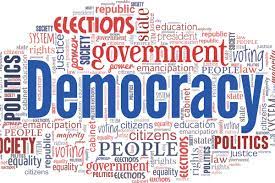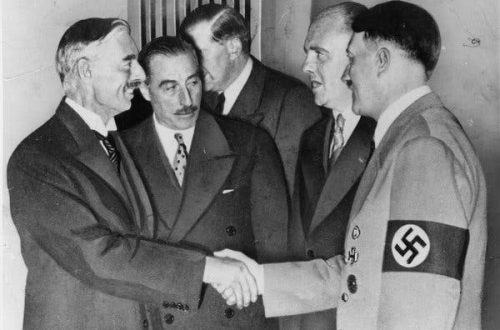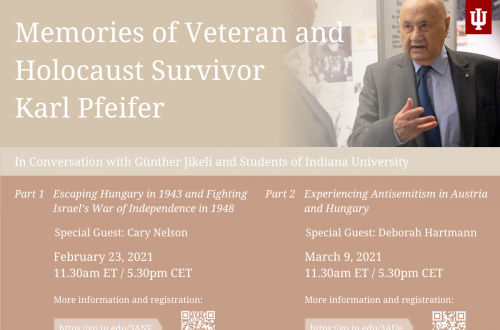This is a guest post written by the military historian D.M. Giangreco, author of The Soldier From Independence: A Military Biography of Harry Truman and the award winning Hell to Pay: Operation DOWNFALL and the Invasion of Japan, 1945-1947. The author is a recognised expert on the end of the Pacific War.
Sixty-six years ago today, the bloodiest war in history came to an end as representatives of Imperial Japan signed articles of surrender aboard the battleship USS Missouri in Tokyo Bay. The ceremony took place less than three weeks after Japanese Emperor Hirohito informed his people by radio that “the enemy has begun to employ a new and cruel bomb, the power of which to do damage is indeed incalculable,” and warned that continuing the war would “result in an ultimate collapse and obliteration of the Japanese nation.” The Japanese people, he said, “must bear the unbearable” and accept defeat.
Atom bombs had exploded over two of Japan’s major cities. Tens of thousands had been killed instantly, and the toll climbed to as many as 210,000 by the end of 1945 from residual blast and radiation deaths. Simultaneously, the Soviet Union had joined the war against Japan, slamming the door on the Japanese militarists last possibility of circumventing the provisions of the recently announced Potsdam Declaration.
Amid all the controversy surrounding this first use of nuclear weapons, one fact remains largely unknown. It is that President Harry S. Truman and his senior military and civilian advisors believed that the planned series of land invasions of Japan these bombings prevented would result in bloody fighting that could well extend into 1947. Meanwhile, the British government, raising its own “Commonwealth Corps” for the invasion, was “resolved to share the agony,” said Churchill, “[of] the final and perhaps protracted slaughter.”
When the war came to its sudden and unexpected end in 1945, the U.S. First Army and Eighth Air Force were already in the midst of their long journey from Europe to the Pacific to reinforce General Douglas MacArthur’s invasion armada centered around three field armies, the Sixth, Eighth, and Tenth. The First Army had already fought its way across France and into the heart of Nazi Germany, while the Eighth Air Force had pummeled the Reich from England.
The invasion of the Imperial homeland, code-named DOWNFALL, contained four major components. First, a mountainous area half as large as Wales on the southernmost island of Kyushu would be seized by the end of 1945 for the construction of air bases and ship anchorages. Three-quarters of a million U.S. soldiers and Marines would be involved in that operation. Next, a similar landing in the spring of 1946 involving nearly a million and a half assault troops, including the newly formed Commonwealth Corps, would be made within striking distance of Tokyo itself, on the island of Honshu. Third, Japan’s sprawling Imperial capital, Tokyo, would be surrounded and thus cut off from Japanese reinforcements by summer. Finally, if the Japanese had not yet surrendered, Tokyo would be taken in brutal block-by-block fighting.
It was assumed that with the “industrial heart” of Japan in American hands, that the Japanese would finally capitulate by the end of 1946—if much of the remaining country could be induced to surrender. In case it didn’t, numerous subsidiary operations running into 1947 were planned and the total force commitment for the subjugation of the Home Islands was to top 5,000,000 from just the United States. Earlier, U.S. Joint Chiefs of Staff planners had cautiously estimated the cost of this endeavor to be “half a million American lives and many times that number in wounded,” because of the willingness of Japanese soldiers to stubbornly fight to the death.
A half-century after the war, some historians would pick up much smaller casualty projections made for specific parts of the opening assault to “prove” that the number of dead and wounded would not have been nearly so dreadful. But the fact of the matter was that losses were already climbing to stunning levels as the fighting drew closer to Japan at Iwo Jima and Okinawa, and as the U.S., and now Royal, navies fought off waves of kamikaze suicide aircraft at sea.
Roughly 178,000 Japanese civilians had lost their lives—burned to death or asphyxiated by American incendiary bombs—and 8 million had been displaced or rendered homeless even before the atomic bombs were dropped. A July 1945 U.S. War Department document grimly predicted: “We shall probably have to kill at least 5 to 10 million Japanese [and] this might cost us between 1.7 and 4 million casualties including 400,000 to 800,000 killed.”
Tokyo had come to an even more chilling conclusion, that the fighting on the Home Islands could lead to the “sacrifice” of 20 million (representing total casualties in some records and deaths alone in others) before the Imperial government achieved some chimerical “victory” over the Americans.
A faction within the Japanese ruling circles was resolved to try to find a way to end the war before the Allied invasion was launched. Unfortunately, the militarists were in firm control of the government, and Japanese moderates had to tread gingerly for fear of arrest or assassination. It was the hope of Truman and his senior advisors that the tremendous shock of the atom bomb would strengthen the peace faction’s hand just long enough to, in effect, stampede the government into a quick capitulation.
In the end, this is precisely what happened—but not before a coup attempt nearly blocked Emperor Hirohito’s surrender announcement—and the Second World War ended on September 2, 1945, instead of late 1946 or even 1947. Without the atomic bombs, the sixty-sixth anniversary of the end of the war would not yet have arrived.


